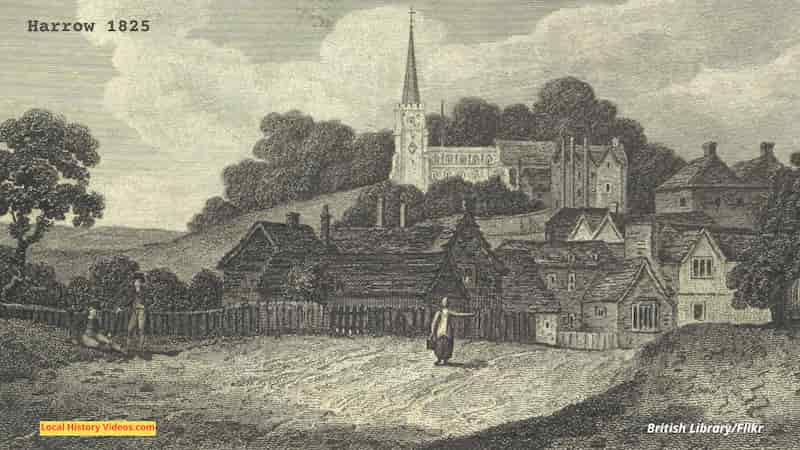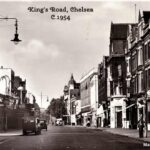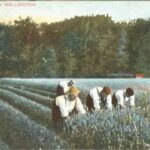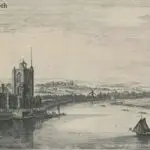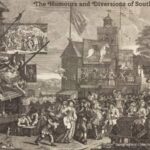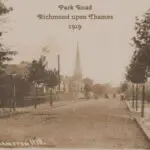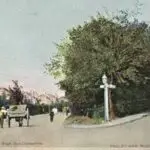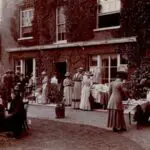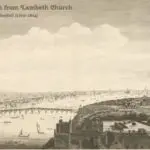Enjoy a glimpse of history through old images of Harrow, in Greater London, England, UK.
Harrow is famous for its boy’s school, which started as a free grammar school and developed into one of Britain’s elite boarding schools, educating a range of luminaries including Lord Byron, Sir Robert Peel, the playwright Sheridan, and Dr. Parr.
But this page is about the community of Harrow-on-the-Hill, which was massively expanded into a huge town on the outskirts of London in the early twentieth century thanks to the railway system.
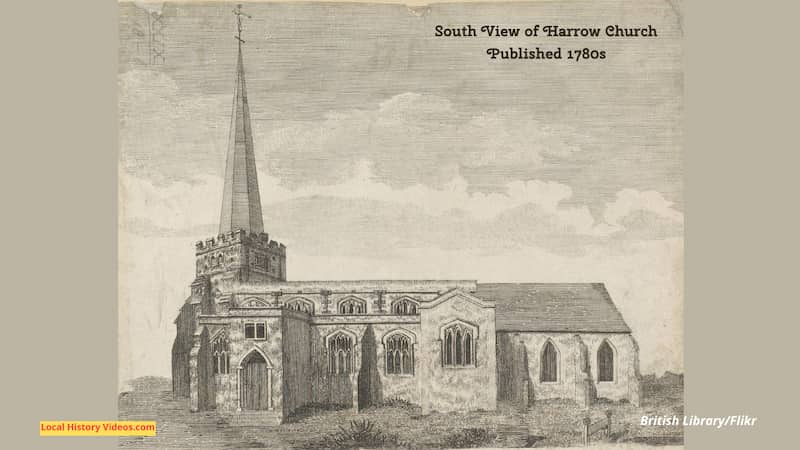
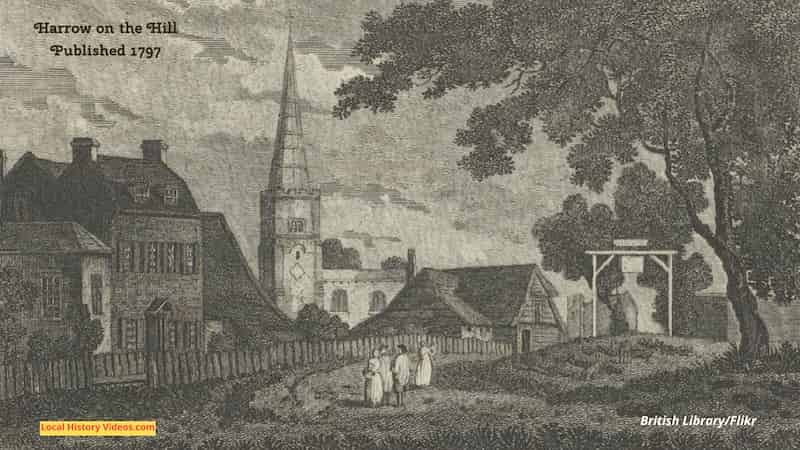
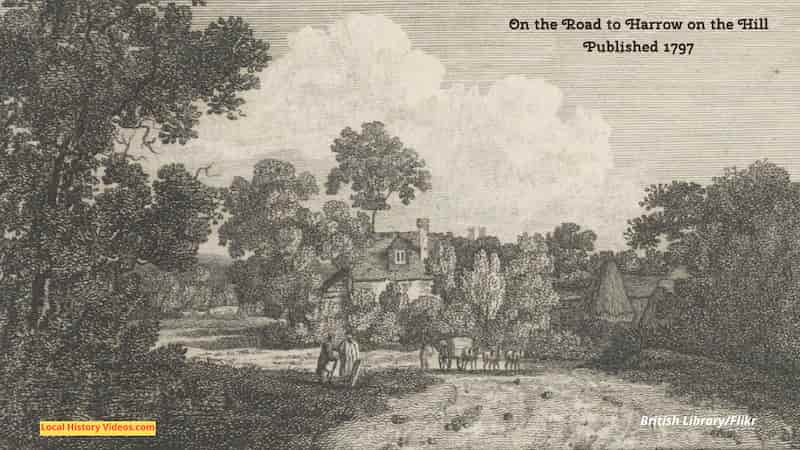
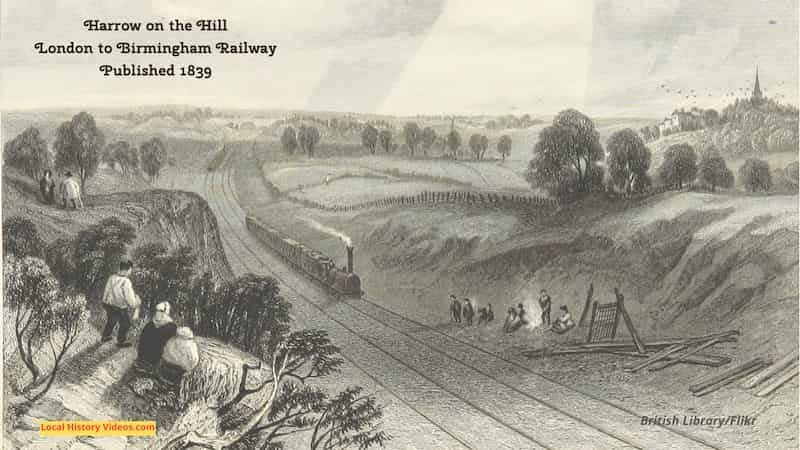
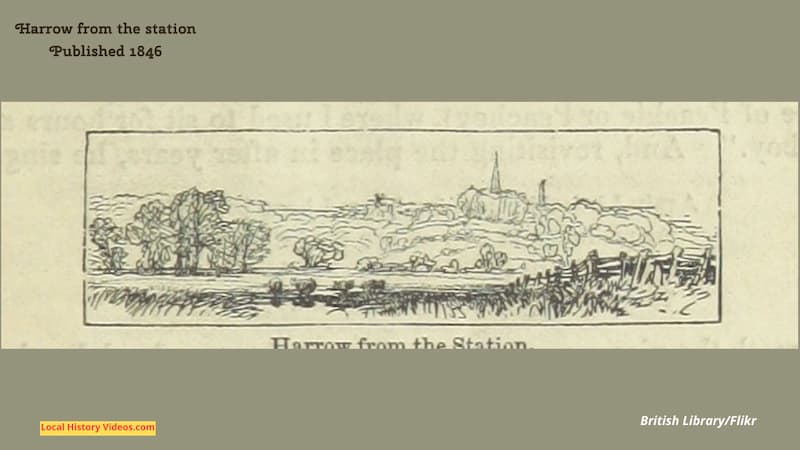
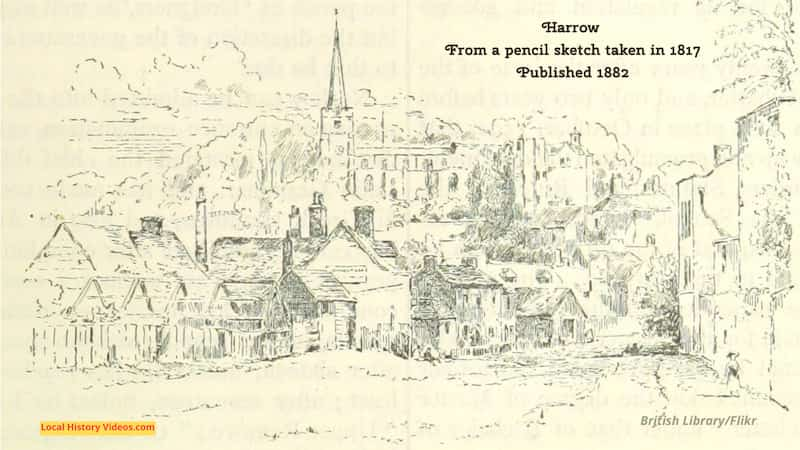
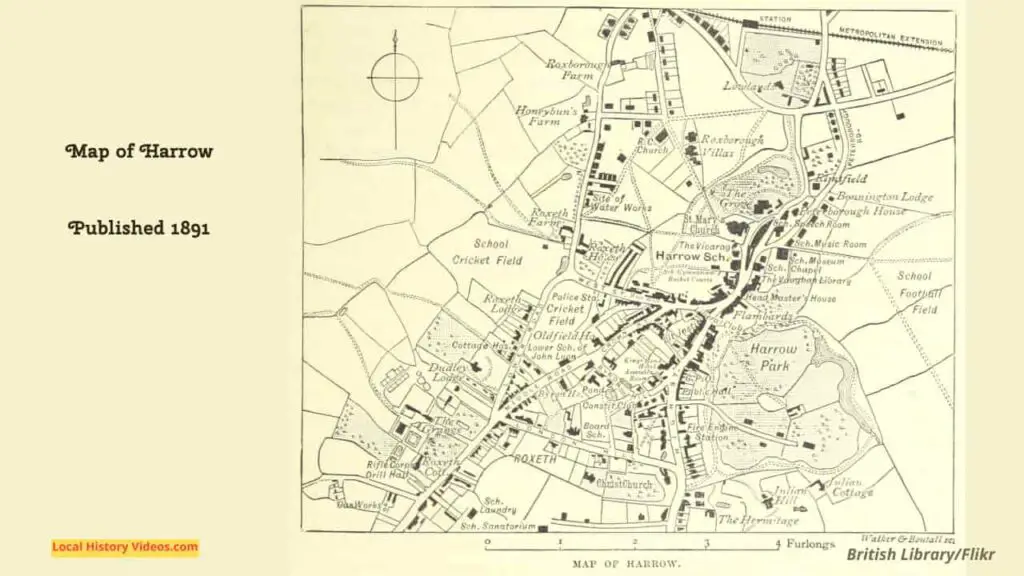
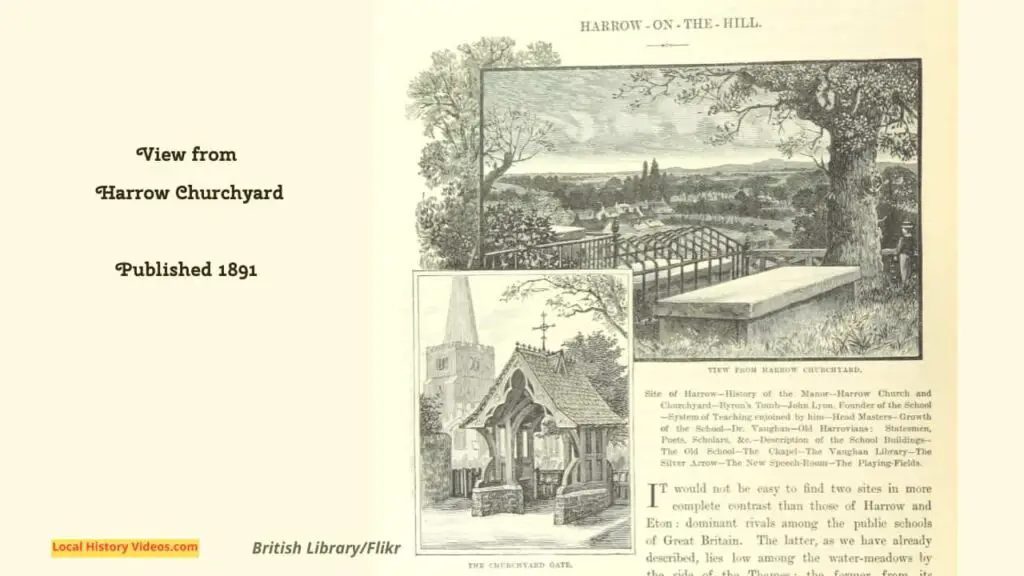
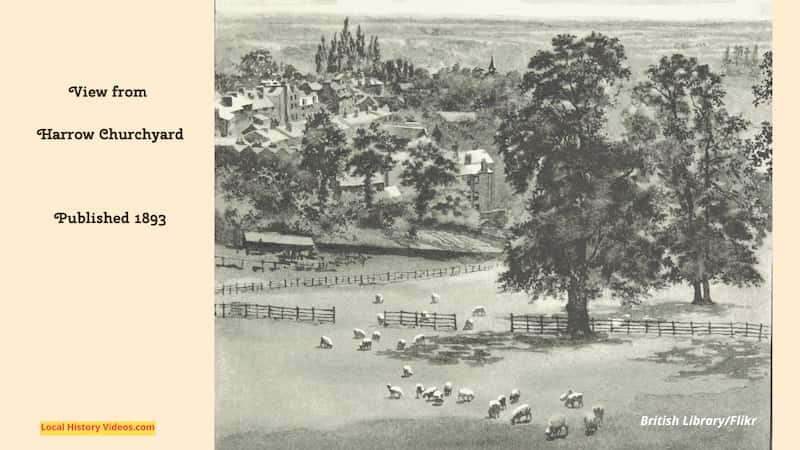
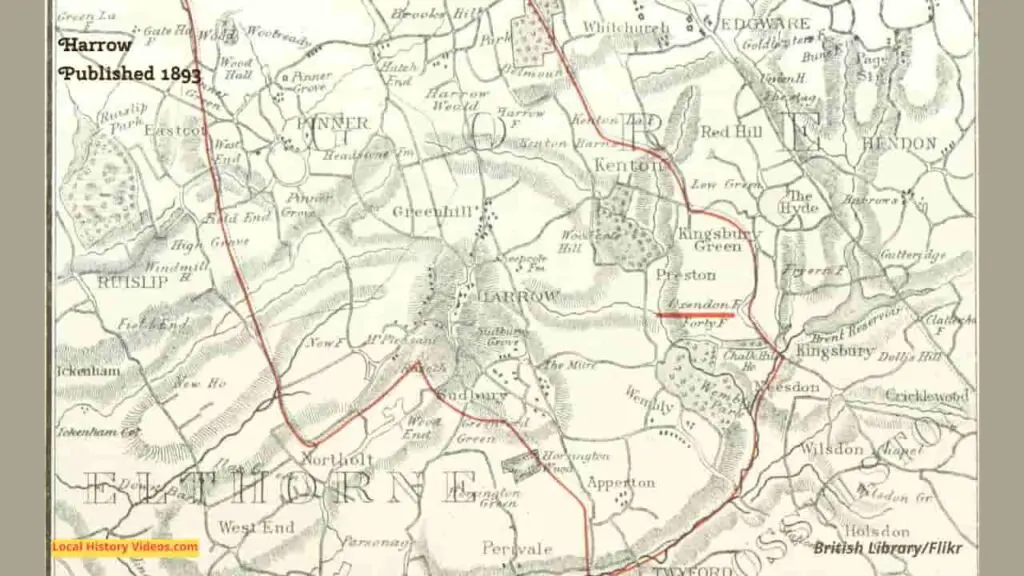
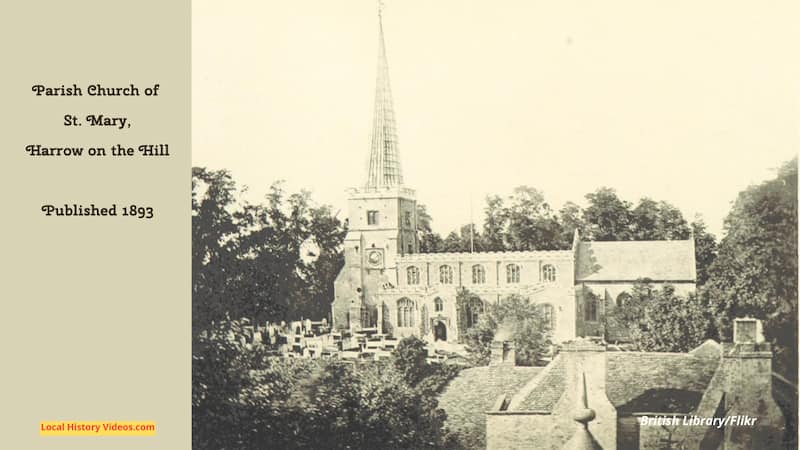
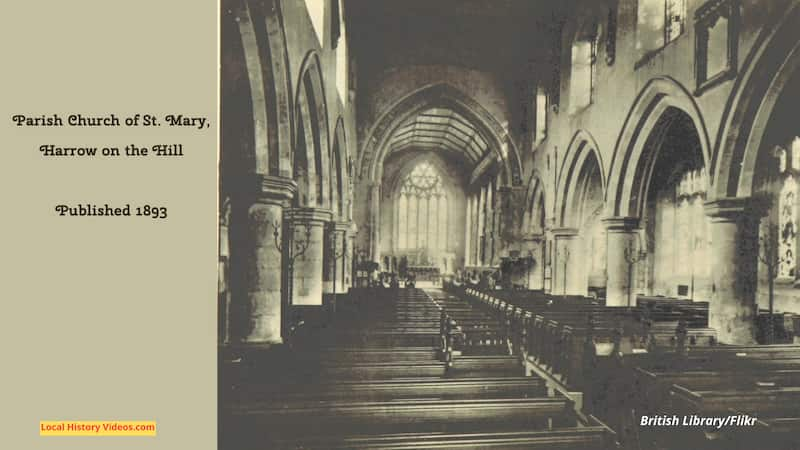
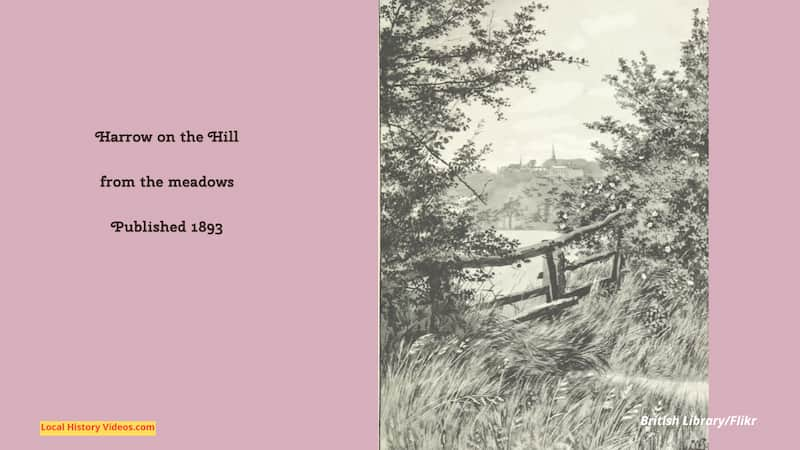
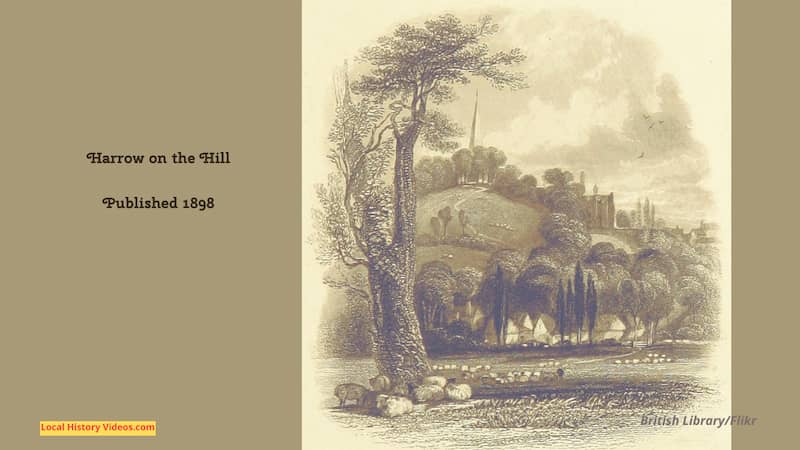
Carnival 1935
This silent film footage records the large number of people and children involved with the carnival procession, and sometimes captures the background homes and businesses too.
Pageantry At Harrow (1935) – British Pathé on YouTube
Early History of Harrow
767 AD – Saxon Charter of Offa, King of Mercia, grants 16,000 acres of land between Gumeninga hergae, (Gumern’s such) and Lidding Brook to Stidberht, Bishop of St Albans.
Cenwulf, successor to Offa, reclaimed the land. After his death it passed to his son Kenelm, then to Kenelm’s murderer and half-sister Cwoenthryth.
825 AD – Cwoenthryth is forced to hand the lands back to the church by the Council of Colvesho.
1086 AD – the Domesday Book, collecting tax records for William the Conqueror, tell us the manor of Harrow was held by Earl Leofwin, and then by Bishop Lanfrane . There was land enough for seventy ploughs, pasture for cattle, and the right to pannage for two thousand hogs.
The right to pannage meant local people, usually tenants, could bring their pigs into the landlord’s woods in the autumn time, to rootle for fallen acorns on the ground. It fattened up the animals ready for the late autumn slaughter, in preparation for winter.
1087 – The church of St Mary was built under instruction from Bishop Lanfrane.
You can still see some of the original parts of the building, especially round the western doorway, and the lower part of the tower.
The Saxon words hergae, hearge, herge, and herige seem to have been associated with places of pagan worship and then Christian churches, and Harrow may have derived from those Saxon terms. So Harrow on the Hill meant Church on the Hill.
1087 AD – The successor to Bishop Lanfranc, Anselm, consecrates the church of St Mary.
1170 AD – Thomas Becket visits St Mary’s church. A few days later, he is assassinated in Canterbury Cathedral, a scandal still remembered today.
12-14th Centuries – St Mary’s church is extended, and the Purbeck Marble font is installed.
1370 AD – A memorial is installed at St Mary’s commemorating Edmund Flambard, who had been Lord of the Manor of Harrow.
15th Century – St Mary’s church is substantially rebuilt.
Felix Summerly, writing in 1846, tells us that King Henry VIII (1509-1547), gave Harrow and other nearby manors to Sir Edward North. He later became Lord North, but fell out of favour with the temperamental monarch, and was then accused of cheating the King out of the “certain lands in Middlesex”.
Later, King Charles II (1649-1651) said “The only visible church I know of, is to be found at Harrow.”
1572 – Harrow School is built as a free grammar school under the patronage of John Lyon, who also did other great works, such as maintaining highways and paying bursaries to poor university scholars.
1807 – Lord Byron wrote “Lines written beneath an elm in the churchyard of Harrow” in St Mary’s churchyard.
1822 – Allegra, illegitimate daughter of Lord Byron and Claire Clairmont died in Bagnacavallo on 19th April, but was buried in the graveyard of the church of St Mary, Harrow.
1847 – St Mary’s church is restored by George Gilbert Scott.
You can find out more about London’s history, at The Lost City of London – Before the Great Fire of 1666, by Dr Robert Wynn Jones
More about London
- Chelsea, London: History in Old ImagesEnjoy a glimpse of history through old images of Chelsea in Greater London, England, UK.
- Wallington, London: History in Old ImagesEnjoy a glimpse of history through old images of Wallington, in Greater London, England, UK.
- Bromley, London: History in Old ImagesEnjoy a glimpse of history through old images of Bromley, in London, England, UK.
- Old Images of Wandsworth, LondonGlimpse history through old images of Wandsworth, London.
- Old Images of Southwark, LondonGlimpse history through old images of Southwark, London, England.
- Old Images of Richmond upon Thames, LondonGlimpse history through old images of Richmond upon Thames, London.
- Old Images of Purley, LondonGlimpse history through old images of Purley, London.
- Old Images of Merton, LondonGlimpse history through old images of Merton, London.
- Old Images of Lewisham, Southeast LondonGlimpse history through old images of Lewisham, in Southeast London, England.
- Old Images of Lambeth, LondonEnjoy a glimpse of history through old images of Lambeth, London, England.

